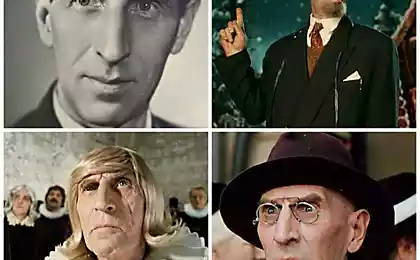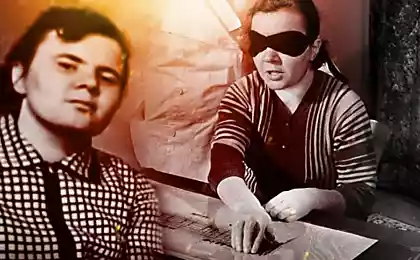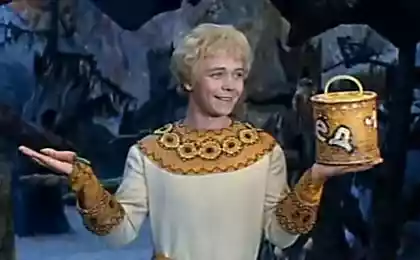475
How does the art: the Kuleshov effect

© John Stezaker
How to read fiction? Particular whether the visual perception of the painting? What is the meaning of the gestures and movements in contemporary dance?
A bowl of hot soup, a child in a coffin and the girl on the couch through the eyes of the actor Mozzhukhin, hunger, sorrow, desire. Well, not exactly the eyes and not quite bad — as filmmaker and theorist Lev Kuleshov with three static plans, glued with the same portrait, proves that the content of the next frame can completely change the meaning of the previous one. So, in General, is the birth of cinema.
"In order to make a picture the Director must compose the separate filmed pieces, disordered and disjointed, into a single whole and to compare individual points in the most advantageous, integral and rhythmical sequence, just as a child is from separate scattered blocks of letters, a whole word or phrase" — wrote Kuleshov in 1917. A few years later, he will conduct a series of experiments, described in "Art cinema" in 1929 and became a textbook explanation of the two main functions of motion picture editing. The first experiment was called "Geographical" and contained 6 frames:
The point is, that with proper organization and direction of actors in neighboring frames, the installation creates the illusion of a unified space and continuous action — thus, observers 'geographical' experiment remained in full confidence that Khokhlova and Obolensky went to the White house.
Second experiment — in fact, "the Kuleshov effect", which demonstrates that the mapping between two different frames can change their contents: thus, not changing in the face of Mozzhukhin, depending on the neighbouring frame, you want soup, then misses a girl, grieving for a dead child.

1920s- the Golden years of film theory, such an explosion in this area not happening anymore. Partly, obviously, due to the fact that the cinema was a young art, and was in need of development and self-determination, partly due to the fact that during the reign of censorship and dictatorship of art because of the limited task has the ability to go into the theory, experiments and abstraction, trying desperately to find a new pictorial language. The film task was essentially one of propaganda, and the properties of the installation was ideal for her expressive means, and the internal organization of film — a way of expression. And installation Kuleshova, and the famous "montage of attractions" Eisenstein, whose meaning lies in the fact that by bringing together one frame with another to give their combination a third meaning, thus, strictly speaking, a metaphor was aimed at the transfer of meaning without the literal. The meaning is not enclosed in the frame, as there is in the mind of the viewer as a result of installation of a collision. Alfred Hitchcock by his own example explains how to use the installation can transform a good-natured uncle in an elderly pervert, not changing facial expressions of the hero.
Ways of working with film, invented by Kuleshov and Eisenstein, of course, was rarely used in its pure form, but marked the beginning of the era of mounting of the experiments — the Directors learned to combine techniques, subjecting them to its own copyrighted methods. Most promotional opportunities installation was fascinated by the Dziga Vertov first decided to renounce titles as part of literary narrative and to convey the meaning of exclusively cinematic means — through the methods of visual mapping and associative montage. His cinema — the avant-garde in the service of the regime, experimental work hymns, collected from the documentary fragments of the lives of Soviet citizens.
Eisenstein, meanwhile, experimented with the concept of directing, arguing that cinema should be neither the main characters nor Express the drama of the plot, and the task of the Director is to collect the film on the timeline. The viability of this approach, he convincingly demonstrates "October", but the urge to experiment in the field of symbolism over "by Beinum meadow" — the first sound film by Eisenstein that it is so complicated details, from the paintings about the collectivization of agriculture "Bezhin meadow" turned into an experimental film about the conflict of generations where the pioneer symbolized the new Russia and his evil father of the old. Shooting shut down for 11 days until graduation "because of the formalism and complexity of film language".
Gradually basic installation techniques have evolved and transformed, becoming more vague — for example, Vsevolod Pudovkin built on the basis of the "Kuleshov effect" his own theory of montage, which was subsequently used by nearly all Soviet film Directors: he combined the emotionless faces of the characters with objects and animals, focused on the details and pay more attention to the ideological promises, and personal experiences of the characters. But at this point, the experiments of Kuleshov and Eisenstein in its original form and does come to naught, completely lost in the film, objazana its existence changeable artist suddenly I hear. They will be replaced by the era of socialist realism, with its white-toothed and tanned workers, farmers, and experiments in the field of installation will declare a clear example of dangerous formalism.
"The Kuleshov effect" will take its place in the Museum, somewhere between the stone axe and digging stick: it will be studied by psychologists, they will admire, and sometimes to rent Hitchcock and Kubrick, and examine Andre Bazin, but still a movie you'll meet him a timid shadow. As you say, one of the leaders of another generation, obsessed by the theory of editing, Jean-Luc Godard: "the Installation of today is nothing compared to what was invested in the Russian filmmakers of the twenties. All of the images that we show today, is nonsense and stupidity."published
Source: theoryandpractice.ru























